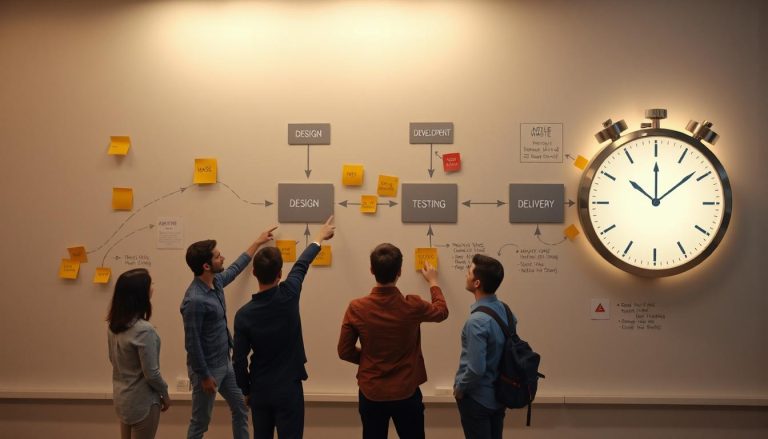Kanban Board: Setting Up for Success
Understanding Kanban Boards
A Kanban board is an exceptional tool that aids in managing, categorizing, and envisioning tasks, primarily in Agile project management. The term “Kanban” takes its name from the Japanese ideology of “visual signal”. This tool has revolutionized the way tasks are handled, providing a clear, clutter-free representation of work and making it extremely convenient for teams to remain focused, efficient, and productive.
The Nitty-Gritty of Kanban Boards: An Overview
Picturing a Kanban board, imagine a whiteboard segmented into different columns with sticky notes or cards signifying tasks moving around. Favorably, each of these columns or sections signifies different phases of a work cycle. As tasks progress, they’re moved from one column to another signifying their progression or stage. This visual snapshot of work helps teams monitor project progression instantaneously and keep tabs on task status seamlessly.
Stepping Stone: Setting Up Your Kanban Board
Setting up a Kanban board is something that is as uncomplicated as it sounds. Yet, carving a well-structured Kanban board predicates creating one that caters to your team’s unique needs, fostering productivity, and streamlining work. The basics to get it going are:
- Deciding on the Board Type: A Physical Kanban board often does wonders when the team is co-located. Conversely, with remote teams becoming the norm, consider using a digital Kanban board. Web-based tools like Jira, Trello, or Asana are often great options.
- Choosing Your Columns: The traditional segmentation typically involves three major sections: “To Do”, “In Progress”, and “Done”. However, depending on the intricacies of your project, you might want to create more specific columns to assess progress.
- Cards Galore: Once your columns are in place, it’s time to create task cards. Pen down the details of each task on these cards, ensuring they’re comprehensive and straightforward. Remember, the goal is to communicate efficiently.
- Work in Progress (WIP) Limits: Handling too many tasks simultaneously can counteract productivity. Establish a WIP limit, which is a restriction on the number of tasks that can be in progress at any one time. This restriction helps ensure the ongoing effectiveness of the process.
Navigating Through Practical Implementations of A Kanban Board
Having a stellar Kanban board is of little use if you don’t understand how to harness its power to maximize output. Here are some handy pointers to make the most of your board:
- Maintaining Fluidity: Ensure that your board is designed in a way that allows for flexibility and change as your project needs evolve.
- Use Color Coding: Color coding can be an efficient tool to quickly identify different types of tasks or priorities. For instance, you can choose a different color for urgent tasks, making them stand out.
- Consistency is Key: Define the rules for using the Kanban board. Make sure everyone understands what each column signifies, the meaning of the color codes, and the policies to follow while moving a card. A well-used board is a great tool.
Pioneering Success with a Kanban Board
The essence of Kanban is to highlight issues and dependencies that are affecting your team, thus allowing them to solve problems as they arise. Following this guide, you should be ready to set up your Kanban board and implement Kanban principles in your work.
A Kanban board is not just about moving tasks from one column to another, it encourages better communication, aids continuous improvement, and helps teams be more effective. It reveals bottlenecks, provides transparency, and cultivates a culture of accountability.
Final Thoughts
Setting up a Kanban Board can be a game-changer for managing workflows. It can help supercharge your productivity, foster robust communications, and instill greater transparency within your team. Moreover, by managing work in progress limits, it encourages an environment conducive to progress without overburdening your team members. Therefore, investing time and effort in correctly setting up and employing a Kanban board can indeed pave the way to project management success.
Remember, there’s no universal approach to using a Kanban board. It’s a tool that best serves its purpose when tailored to the unique needs and working methods of your team. So, get creative, ascertain what works best for your team, and embark on a journey towards efficiency and productivity!





